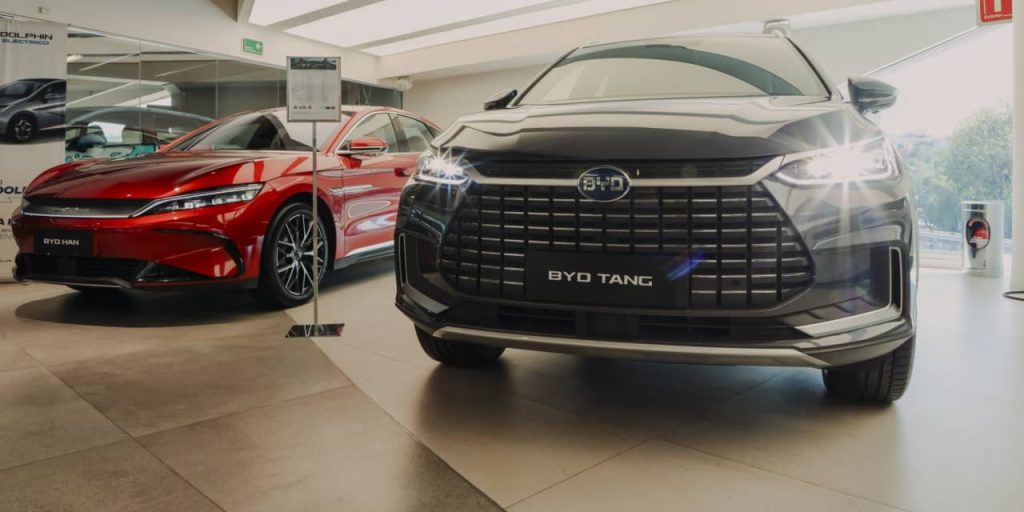BYD’s battery electric vehicle sales growth just won’t let up. It’s about to take a sales crown from
Tesla.
The Chinese EV upstart’s success also exposes a risky bet from Tesla CEO Elon Musk to wait on producing a low-price vehicle.
There also are some positives for Tesla (ticker: TSLA) embedded in
BYD
(1211.Hong Kong) numbers. What’s more, the two car makers produce vehicles for different market segments. Still, it’s tough to lose the top spot.
Wednesday, BYD reported October sales volumes. The Chinese EV maker sold 301,095 passenger vehicles comprised of 165,505 battery electric vehicles, or BEVs, and 135,590 plug-in hybrids.
BEV sales grew 60% year over year. Hybrid sales were up about 19%.
BYD is outgrowing Tesla. Today, BYD is, essentially, as large as the EV pioneer in all-battery electric vehicles. In the third quarter, BYD shipped about 432,000 BEVs. Tesla shipped about 435,000.
That’s the closest the race between the two has ever been. In the third quarter of 2022, BYD shipped 258,610 units while Tesla shipped 365,923. In the third quarter of 2021, BYD shipped 91,684 units while Tesla shipped 237,823.
For the fourth quarter, BYD is expected to ship about 490,000 BEVs, according to Wall Street estimates. Tesla is expected to ship about 475,000. It will be the first time in the modern EV era that Tesla will be toppled from the top spot on a quarterly basis.
For the full year, Tesla is expected to retain its crown, shipping about 1.8 million units. BYD will ship about 1.5 million BEVs in 2023.
Investors shouldn’t really care who is larger, as long as growth is as expected. What’s more, most BYD sales come in China and Tesla sells EVs in all major global markets. Tesla vehicles are also more expensive than BYD vehicles.
Sales divided by units for Tesla works out to about $54,000. The number for BYD is about $28,000.
Still, BYD’s success does illustrate that there is a market for lower-priced EVs. That’s something Tesla is working on but the company elected to work on big first, launching the Cybertruck in 2019. That truck is due to be delivered to customers this month.
The bigger BYD gets before Tesla launches a smaller vehicle the more investors will debate the truck’s timing versus a smaller, lower-priced Tesla.
Tesla needs new models to keep sales growing. Wall Street agrees with that. Cybertruck is coming, but the timing of the smaller vehicle is still uncertain.
One thing that is a relief to both BYD and Tesla investors is the strength of the Chinese EV market. BYD sales rose 60% year over year. October sales volumes at
NIO
(NIO),
XPeng
(XPEV), and
Li Auto
(LI) hit 76,498 units combined, up some 200% year over year.
Growth is good. Those four EV makers account for between 30% and 40% of the total Chinese BEV market.
Tesla reports volumes quarterly. Industry associations report Tesa deliveries. Those numbers are typically released about a week into a new month. Through September, Tesla sold about 433,000 BEVs in China in 2023, up about 36% year over year.
BYD’s U.S.-listed American depositary receipts were down 1.6% in late trading Wednesday while the
S&P 500
and
Nasdaq Composite
were up 0.7% and 0.9%, respectively.
It shouldn’t be the delivery numbers pushing BYD stock down. Citi analyst Jeff Chung called the results a “beat” versus expectations in a Wednesday report. Starting points might be partly to blame. Through late trading Wednesday, BYD shares had performed strongly, up about 29% over the past 12 months.
Tesla stock was up 0.7% in late trading Wednesday. Its shares were down about 11% over the past 12 months.
Write to Al Root at allen.root@dowjones.com
Read the full article here
